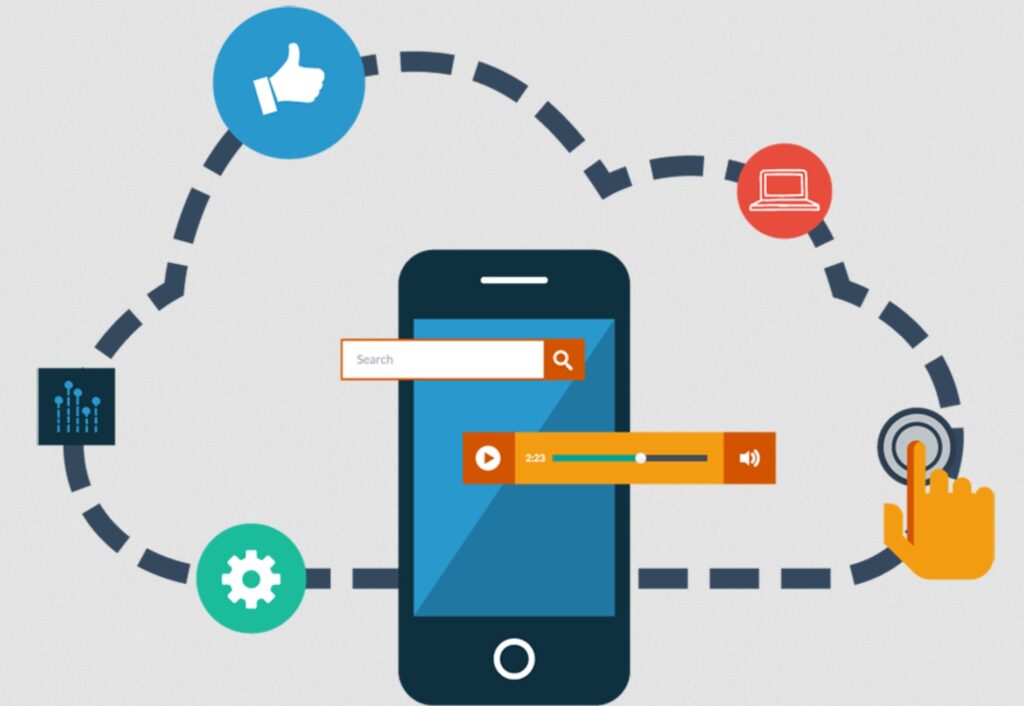Clouds are not just another IT tool, but a new business model, which turned out to be in great demand during the crisis. Clouds allow you to optimize business processes, quickly launch and close projects, reliably store critical data, and free up development resources. Cloud platforms provide access to your own information from any gadget anywhere in the world. It is not only convenient but also safe.
Before developing a cloud app, you may find it helpful to learn more about native vs Web vs cross-platform app development here to choose the right mobile development approach.
Today, many organizations deploy and migrate their applications to the cloud. Agility, scalability, performance, and cost savings are among the main drivers for the cloud app development and a fundamental component of today’s digital transformation. The new development capabilities offered by the cloud enable organizations to stay ahead of the demands of the digital business model they are migrating to today. According to the IDC forecast, by 2024, companies will use cloud applications to provide flexibility, ease of deployment, and management.

1. Independent Server and Operating System
Applications are not tied to a specific operating system or an individual computer. The cloud platform automates the configuration of infrastructure by dynamically allocating resources during deployment based on the current needs of the application. In a cloud-based runtime, you can optimize application lifecycle management, including scaling with increased demand, resource utilization, and disaster recovery with minimal downtime.
Besides, cloud app development is driven by agile DevOps processes. It is the interaction of developers and IT departments in order to provide quality software that solves customer problems. DevOps has great potential for creating an environment where new software products are developed, tested, and released frequently, quickly, and consistently.

2. Security
The cloud architecture provides the tools you need to find a crash exactly when it happens. We need to anticipate everything in the system: create a profile of the normal state, identify deviations from this norm, discover the components of the system that contribute to defects, and even failure. At the core of cloud applications are functionally rich metrics, monitoring, alerts, data visualization structures, and other tools that help eliminate the aforementioned problems.
In order to limit the risk associated with the occurrence of a failure, we need to limit the scope of components or functions that may be affected by it. Microservices are of great importance here. Microservices is an approach in which a system or application is divided into several small services, each of which runs in its own process and communicates with others through the exchange of messages, usually over HTTP. In comparison, any change to a monolithic application consisting of a server, database, and user interface will incur the assembly and deployment of the entire monolith, and users will have to scale the entire system, even if only one application module requires it. Microservices technology allows you to divide a system into many parts, each of these parts being independent of the other and can be written in any programming language.

3. Scalability
In a cloud infrastructure, it is possible to conduct an automatic resource allocation to survive the growth of traffic and users without problems. When the load on IT services changes, for example, traffic grows during a sale, the system needs to be scaled, and you need to add additional resources to it to cope with the new load.
In a traditional infrastructure, equipment is purchased on conventional servers for this, which can then be idle if the load drops again. In cloud infrastructures, companies simply allocate additional resources for the required time. And the faster these resources can be obtained, the faster the system rebuilds under load and the less the risk of failures.
For example, it is possible to automatically scale the IT system depending on the needs of the application: incoming traffic and processed workload. This means that the application will almost instantly get the resources it needs during peak periods and will not waste resources during less busy times.
The company does not overpay for capacity when it does not need it, that is, it optimizes IT costs, including by improving utilization by 2-3 times, and does not risk losing customers due to the fact that the application hangs during the growth of requests.

4. Stability and Flexibility
In the software era, successful companies can develop and deliver applications to customer requests quickly. When an outdated IT infrastructure fails, services can suffer. In the cloud, developers pay particular attention to architecture to ensure that it is resilient. Clouds help you design systems that stay online regardless of disruptions in any environment.
An application can provide both offline application experience and web application portability. Although the data is stored and processed in the cloud, the direct user interface runs on the local device. Users have the ability to cache data locally, which can provide them with a completely autonomous work if necessary.
Cloud apps, unlike web apps, can be used offline even when there is no wireless connection or the Internet is disconnected. Besides, cloud applications can partially function even when there is a long absence of the Internet connection, for example, if the user has left for a vacation.

5. Optimization of Processes
Cloud applications allow you to create and bring products to the market quickly. At the same time, the implementation of an idea may take several days or even hours instead of several months. Public options providers offer impressive capabilities at a reasonable cost. But many companies are not ready to settle for one infrastructure. With a cloud-enabled platform, businesses can develop applications that work equally well in the public and private clouds. Development teams launch applications and services that are more profitable for business, without being tied to a single provider. The most important feature is that the cloud platform can offer virtually unlimited computing power on demand.
Thus, app development is an approach to building software applications in the form of microservices and running them on a containerized and dynamically organized platform in order to take advantage of the cloud computing model. Companies that deploy and use cloud applications get software products to market faster, test new ideas, and respond to customer requests.





![Calgary’s Hottest Neighborhoods for Luxury Homebuyers [2024]](https://thewashingtonote.com/wp-content/uploads/2024/04/Calgary-324x160.png)



